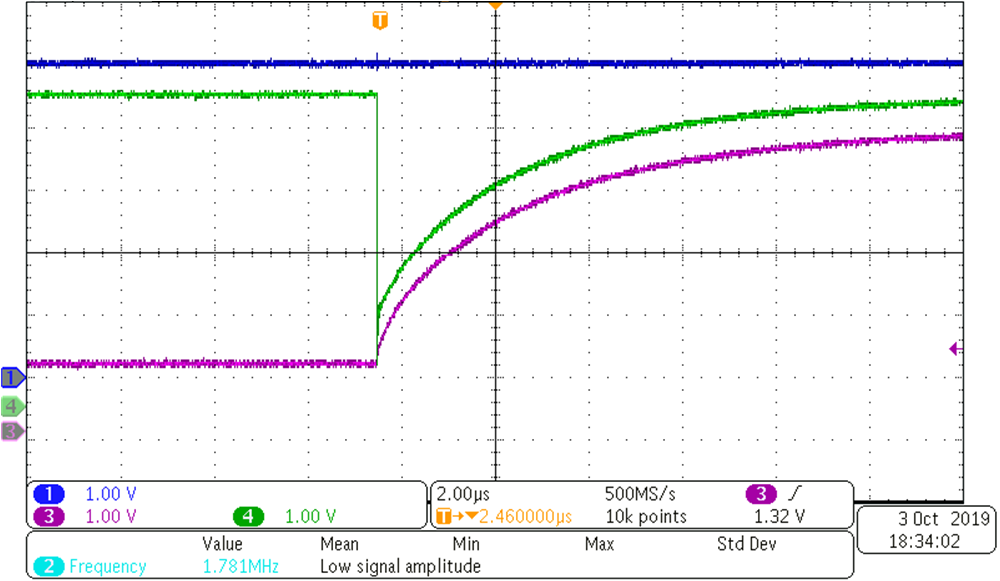SCPA069 July 2024 TCA4307
5 Hot Insertion
Hot insertion, sometimes called hot swap or hot join, is a term used in the industry to describe an event in which an non-powered PCB, is connected to a powered PCB, also known as the backplane. When a live I2C bus (the one that is already powered) sees an non-powered I2C bus (PCB), there can be a mismatch voltage levels. For example, if the live I2C bus is communicating where SCL and SDA are both logic highs, then when the non-powered I2C bus makes connection the introduction non-powered parasitic capacitance onto the bus can force both SDA and SCL to take a quick dip to GND to charge the newly introduced parasitic capacitance from the non-powered board. An example of this is shown scenario is shown in the figure below. Channel 4 (green) is the SCL pin on the live bus (backplane) and channel 3 (purple) is the SCL line on the non-powered I2C Bus (daughter card). The live bus SCL drops to match the current voltage of the daughter card’s SCL voltage level due to the parasitic capacitance added to the live bus. Note that this image showcases a 1V pre-charge feature of TI’s I2C hot swap devices so the voltage drop only drops down to 1V instead of ground.
 Figure 5-1 Hot Insertion Example
Figure 5-1 Hot Insertion ExampleThe parasitic capacitance voltage drop event can look like an additional false clock pulse on the I2C bus which can corrupt the transmitted data and in the worse case scenario bring about a stuck bus condition.